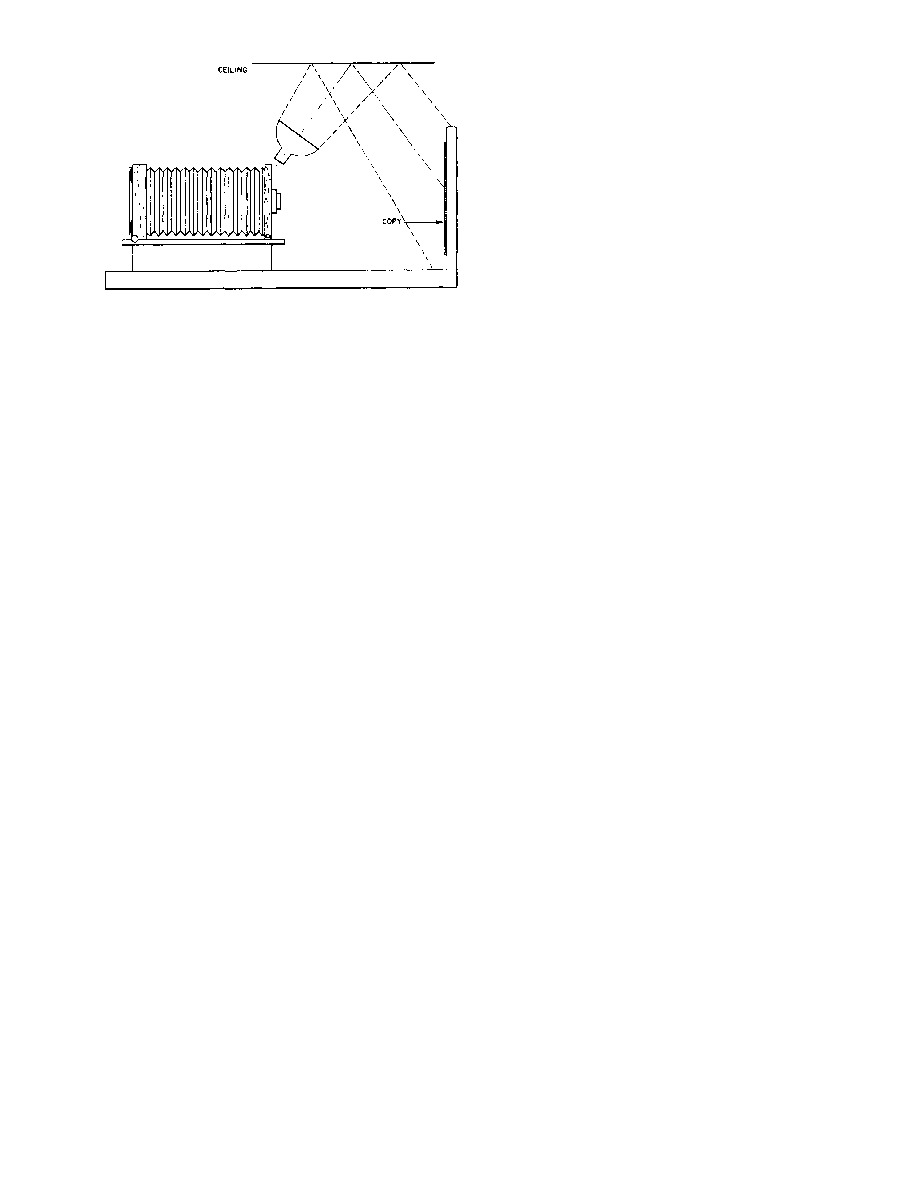
DOFMaster
for Windows
On-line
Depth of Field
Calculator
DOFMaster for Mobile Devices
On-line
Depth of Field
Table
Hyperfocal
Distance Chart
Articles
FAQ
Recommended
Books
Support
Contact
Links
Home
for Windows
On-line
Depth of Field
Calculator
DOFMaster for Mobile Devices
On-line
Depth of Field
Table
Hyperfocal
Distance Chart
Articles
FAQ
Recommended
Books
Support
Contact
Links
Home
As an Amazon Associate I earn from qualifying purchases.
![]()
so diffused light bounces off the surface onto the original
(fig. 8-5). When the surface is too high or other than
white, it may be possible to use a white reflector
positioned horizontally over the upturned lights. This
reflector could be a large sheet of white cardboard.
work is by using polarized light. In regular photography,
a polarizing filter is placed over the camera lens to
subdue reflections. This works because the light from
the sun is polarized as it passes through the atmosphere
a polarizing filter over the lens only does not greatly
reduce unwanted reflections in copy work. In copying,
polarizing screens must be used over the lights as well
as a polarizing filter over the lens.
increase is from about 10 to 16 times the normal
exposure required with the same lights without
polarizing screens. The exact increase is best deter-
mined through a series of exposure tests.
for copy work should be used, and like all lenses, they
should always be kept clean.
calculating exposure. You must consider the nature of
the original-its color and brightness, the intensity of the
object-to-image ratio or bellows extension
setup, dark originals require more exposure than light
originals. The amount of exposure compensation
depends on the darkness or lightness of the original.
When TTL (through the lens) metering is read directly
from the original, a dark original may require twice the
exposure of a standard exposure, and a light original
may require less than 50 percent of a standard exposure.
You should always use a gray or white card to determine
the exposure more accurately.
the copyboard, by using lamps of different light intensity
output, or by reducing the intensity of illumination by
diffusing the light.
exposure meter is particularly useful when the copy
lights are moved or changed from the positions used to
calculate a standard exposure.
meter is used or when a reflected meter reading is taken
of an 18 percent gray card at the copyboard. When a gray
card is not available, a reflected meter reading of a matte
white surface with about 90 percent reflectance can be
taken. The back of white photo paper provides this
reflectance. When a white surface is used to calculate an
exposure, the ISO or exposure index of the film should
be divided by 5 and rounded off to the nearest setting on
the meter. For example: when the ISO is 32, divide by
5 and use 6 or the nearest setting on the meter. You also
Remember, exposure meters are calibrated to produce
middle gray regardless of the light reflectance ability of
the subject. Thus the light reflectance ability of an
original should be considered in determining an
exposure.
exposures, even when an exposure meter is used.
Basic Photography Course

As an Amazon Associate I earn from qualifying purchases.
WWW.DOFMASTER.COM
© 2006 Don Fleming. All rights reserved.
© 2006 Don Fleming. All rights reserved.